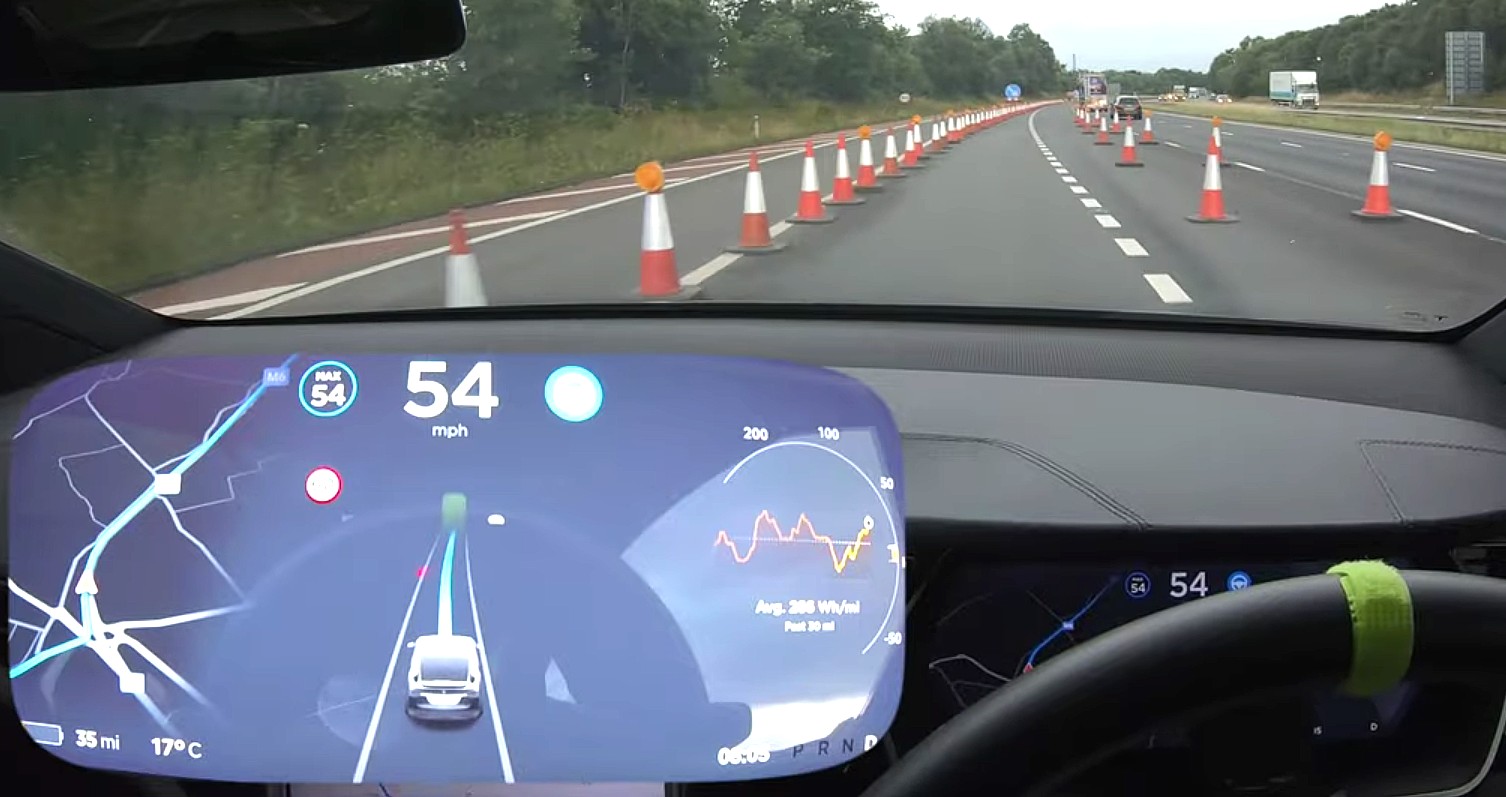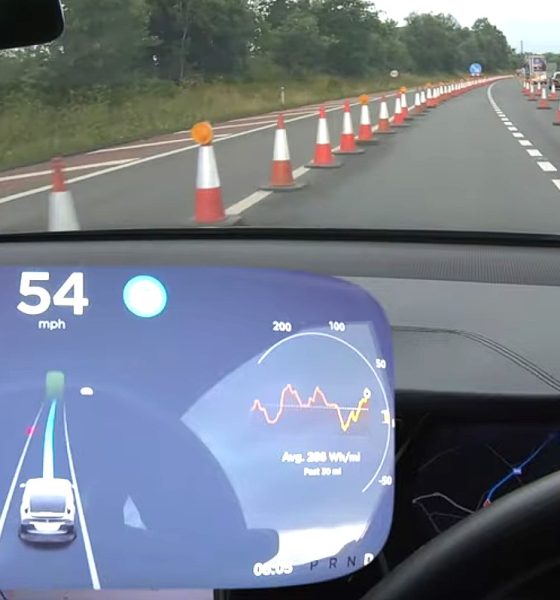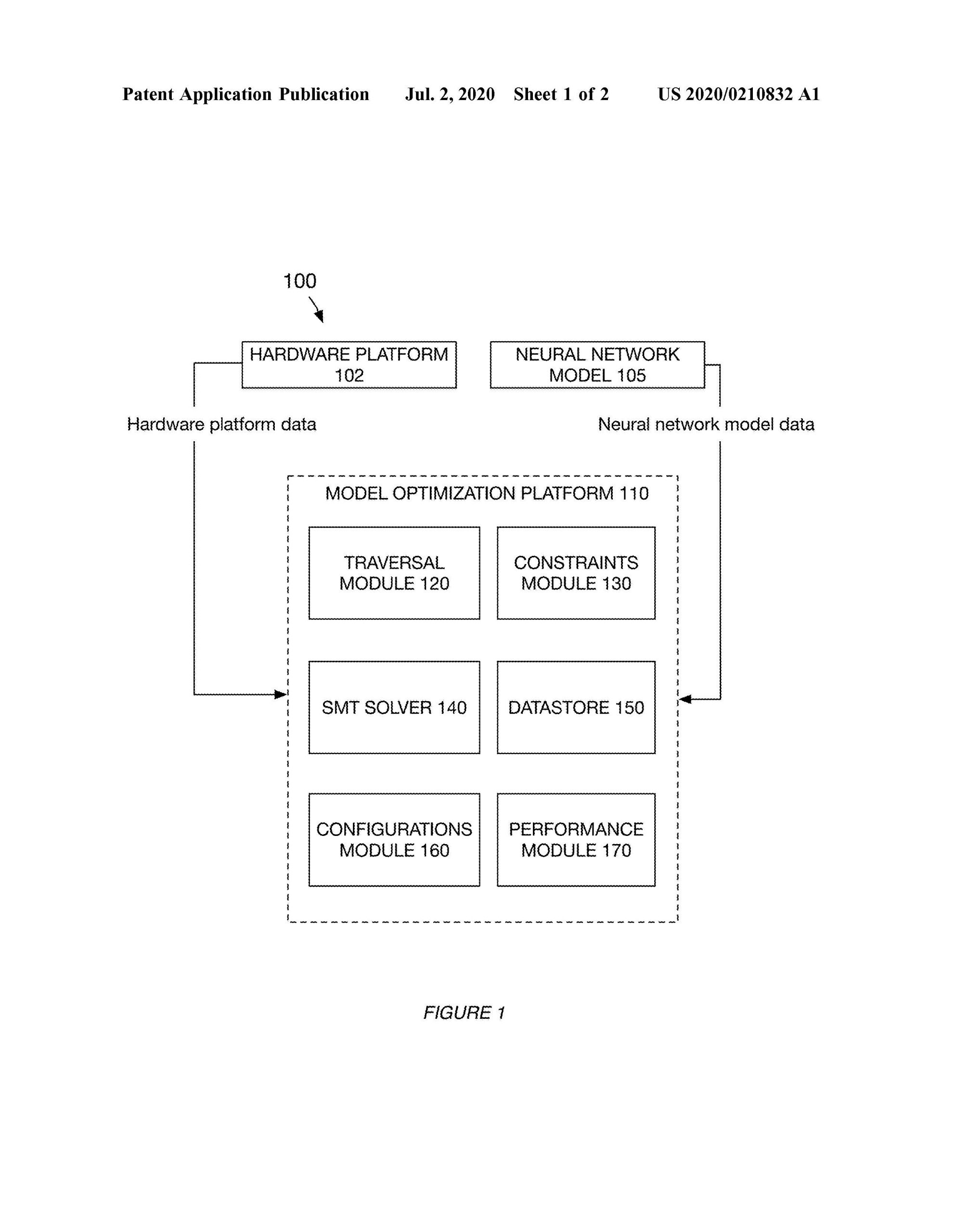

News
Tesla’s Neural Network adaptability to hardware highlighted in new patent application
Tesla’s developments in the artificial intelligence arena are one of the most important aspects of its current and future technology, and this includes adapting neural networks to various hardware platforms. A recent patent publication titled “System and Method for Adapting a Neural Network Model On a Hardware Platform” provides a bit of insight into how the electric car maker is taking on the challenge.
In general, a neural network is a set of algorithms designed to gather data and recognize patterns from it. The particular data being collected depends on the platform involved and what kind of information it can send to the network, i.e., cameras/image data, etc. Differences between platforms mean differences in the neural network algorithms, and adapting them is something time consuming for developers. Just as apps have to be programmed to work based on the operating system or hardware on a phone or tablet, for example, so too do neural networks. Tesla’s answer to the adaptation issue is automation (of course).
During the adaptation process of a neural network to specific hardware, decisions must be made by a software developer based on available options built into the hardware being used. Each of these options, in turn, usually requires research, hardware documentation review, and impact analysis, with each set of options chosen, eventually adding up to a configuration for the neural network to use. Tesla’s application calls these options “decision points,” and they are a vital part of how their invention functions.

According to the application, after plugging in a neural network model and the specific hardware platform information for adaptation, software code traverses the network to learn where the decision points are, then runs the hardware parameters against those points to provide available configurations. More specifically, the software method looks at the hardware constraints (such as processing resources and performance metrics) and generates setups for the neural network that will satisfy the requirements for it to operate correctly. From the application:
“In order to produce a concrete implementation of an abstract neural network, a number of implementation decisions about one or more of system’s data layout, numerical precision, algorithm selection, data padding, accelerator use, stride, and more may be made. These decisions may be made on a per-layer or per-tensor basis, so there can potentially be hundreds of decisions, or more, to make for a particular network. Embodiments of the invention take many factors into account before implementing the neural network because many configurations are not supported by underlying software or hardware platforms, and such configurations will result in an inoperable implementation.”

Tesla’s invention also provides the ability to display the neural network configuration information on a graphical interface to make assessment and selection a bit more user friendly. For instance, different configurations could have different evaluation times, power consumption, or memory consumption. Perhaps an analogy for this process would be selecting configurations based on differences between Track Mode and Range Mode but instead for how you’d want your AI to work with your hardware.
This patent application looks to be one of the products of Tesla’s reported acquisition of DeepScale, an AI startup focused on Full Self Driving and designing neural networks for small devices. The listed inventor, Dr. Michael Driscoll, was a Senior Staff Engineer for DeepScale before transitioning to a Senior Software Engineer position at Tesla. Prior CEO of DeepScale, Dr. Forrest Iandola, also transitioned to Tesla as a Senior Staff Machine Learning Scientist before moving on to independent research this year.

News
Tesla FSD fleet is nearing 7 billion total miles, including 2.5 billion city miles
As can be seen on Tesla’s official FSD webpage, vehicles equipped with the system have now navigated over 6.99 billion miles.

Tesla’s Full Self-Driving (Supervised) fleet is closing in on almost 7 billion total miles driven, as per data posted by the company on its official FSD webpage.
These figures hint at the massive scale of data fueling Tesla’s rapid FSD improvements, which have been quite notable as of late.
FSD mileage milestones
As can be seen on Tesla’s official FSD webpage, vehicles equipped with the system have now navigated over 6.99 billion miles. Tesla owner and avid FSD tester Whole Mars Catalog also shared a screenshot indicating that from the nearly 7 billion miles traveled by the FSD fleet, more than 2.5 billion miles were driven inside cities.
City miles are particularly valuable for complex urban scenarios like unprotected turns, pedestrian interactions, and traffic lights. This is also the difference-maker for FSD, as only complex solutions, such as Waymo’s self-driving taxis, operate similarly on inner-city streets. And even then, incidents such as the San Francisco blackouts have proven challenging for sensor-rich vehicles like Waymos.
Tesla’s data edge
Tesla has a number of advantages in the autonomous vehicle sector, one of which is the size of its fleet and the number of vehicles training FSD on real-world roads. Tesla’s nearly 7 billion FSD miles then allow the company to roll out updates that make its vehicles behave like they are being driven by experienced drivers, even if they are operating on their own.
So notable are Tesla’s improvements to FSD that NVIDIA Director of Robotics Jim Fan, after experiencing FSD v14, noted that the system is the first AI that passes what he described as a “Physical Turing Test.”
“Despite knowing exactly how robot learning works, I still find it magical watching the steering wheel turn by itself. First it feels surreal, next it becomes routine. Then, like the smartphone, taking it away actively hurts. This is how humanity gets rewired and glued to god-like technologies,” Fan wrote in a post on X.
News
Tesla starts showing how FSD will change lives in Europe
Local officials tested the system on narrow country roads and were impressed by FSD’s smooth, human-like driving, with some calling the service a game-changer for everyday life in areas that are far from urban centers.

Tesla has launched Europe’s first public shuttle service using Full Self-Driving (Supervised) in the rural Eifelkreis Bitburg-Prüm region of Germany, demonstrating how the technology can restore independence and mobility for people who struggle with limited transport options.
Local officials tested the system on narrow country roads and were impressed by FSD’s smooth, human-like driving, with some calling the service a game-changer for everyday life in areas that are far from urban centers.
Officials see real impact on rural residents
Arzfeld Mayor Johannes Kuhl and District Administrator Andreas Kruppert personally tested the Tesla shuttle service. This allowed them to see just how well FSD navigated winding lanes and rural roads confidently. Kruppert said, “Autonomous driving sounds like science fiction to many, but we simply see here that it works totally well in rural regions too.” Kuhl, for his part, also noted that FSD “feels like a very experienced driver.”
The pilot complements the area’s “Citizen Bus” program, which provides on-demand rides for elderly residents who can no longer drive themselves. Tesla Europe shared a video of a demonstration of the service, highlighting how FSD gives people their freedom back, even in places where public transport is not as prevalent.
What the Ministry for Economic Affairs and Transport says
Rhineland-Palatinate’s Minister Daniela Schmitt supported the project, praising the collaboration that made this “first of its kind in Europe” possible. As per the ministry, the rural rollout for the service shows FSD’s potential beyond major cities, and it delivers tangible benefits like grocery runs, doctor visits, and social connections for isolated residents.
“Reliable and flexible mobility is especially vital in rural areas. With the launch of a shuttle service using self-driving vehicles (FSD supervised) by Tesla in the Eifelkreis Bitburg-Prüm, an innovative pilot project is now getting underway that complements local community bus services. It is the first project of its kind in Europe.
“The result is a real gain for rural mobility: greater accessibility, more flexibility and tangible benefits for everyday life. A strong signal for innovation, cooperation and future-oriented mobility beyond urban centers,” the ministry wrote in a LinkedIn post.
News
Tesla China quietly posts Robotaxi-related job listing
Tesla China is currently seeking a Low Voltage Electrical Engineer to work on circuit board design for the company’s autonomous vehicles.

Tesla has posted a new job listing in Shanghai explicitly tied to its Robotaxi program, fueling speculation that the company is preparing to launch its dedicated autonomous ride-hailing service in China.
As noted in the listing, Tesla China is currently seeking a Low Voltage Electrical Engineer to work on circuit board design for the company’s autonomous vehicles.
Robotaxi-specific role
The listing, which was shared on social media platform X by industry watcher @tslaming, suggested that Tesla China is looking to fill the role urgently. The job listing itself specifically mentions that the person hired for the role will be working on the Low Voltage Hardware team, which would design the circuit boards that would serve as the nervous system of the Robotaxi.
Key tasks for the role, as indicated in the job listing, include collaboration with PCB layout, firmware, mechanical, program management, and validation teams, among other responsibilities. The role is based in Shanghai.
China Robotaxi launch
China represents a massive potential market for robotaxis, with its dense urban centers and supportive policies in select cities. Tesla has limited permission to roll out FSD in the country, though despite this, its vehicles have been hailed as among the best in the market when it comes to autonomous features. So far, at least, it appears that China supports Tesla’s FSD and Robotaxi rollout.
This was hinted at in November, when Tesla brought the Cybercab to the 8th China International Import Expo (CIIE) in Shanghai, marking the first time that the autonomous two-seater was brought to the Asia-Pacific region. The vehicle, despite not having a release date in China, received a significant amount of interest among the event’s attendees.








